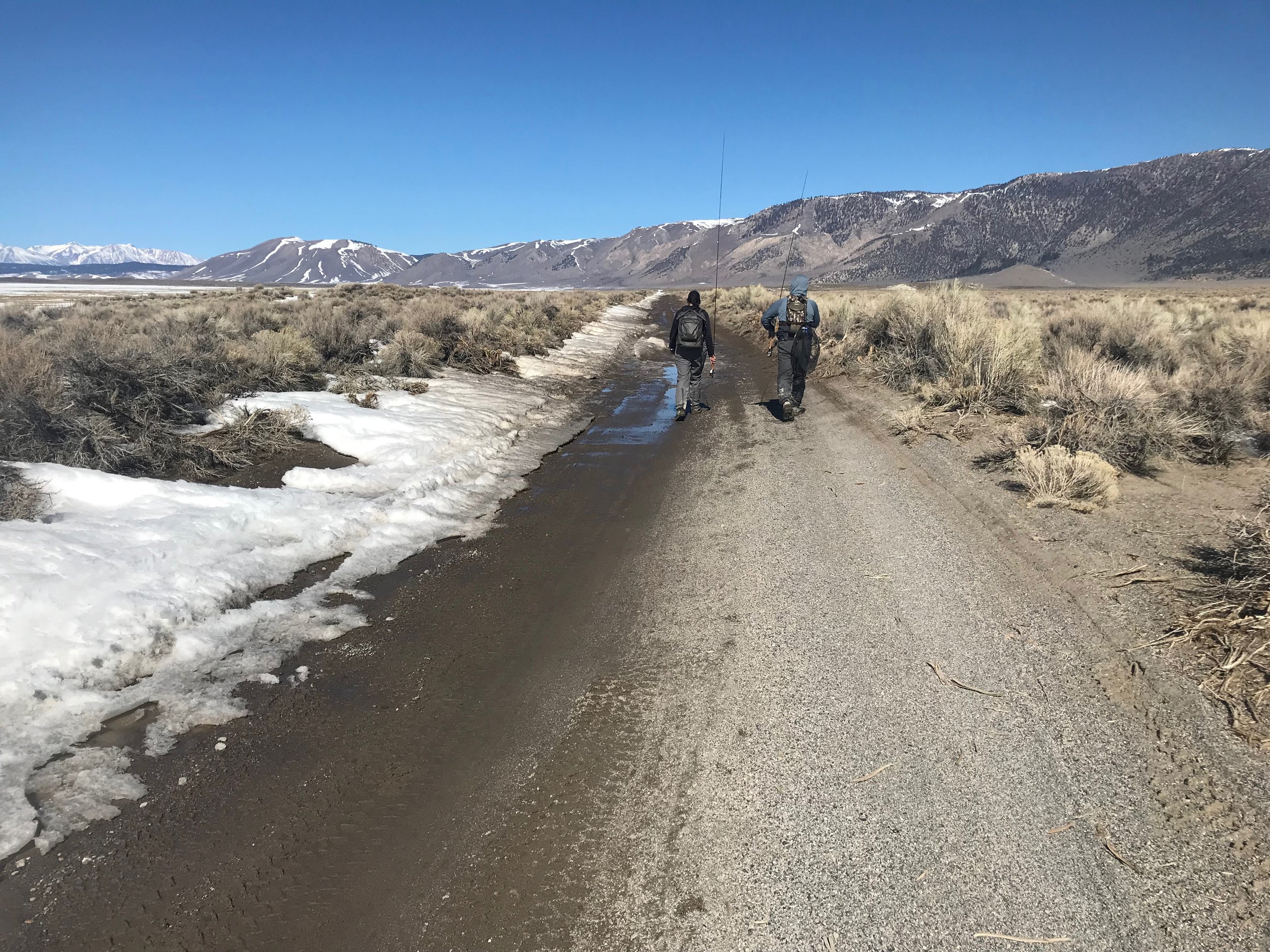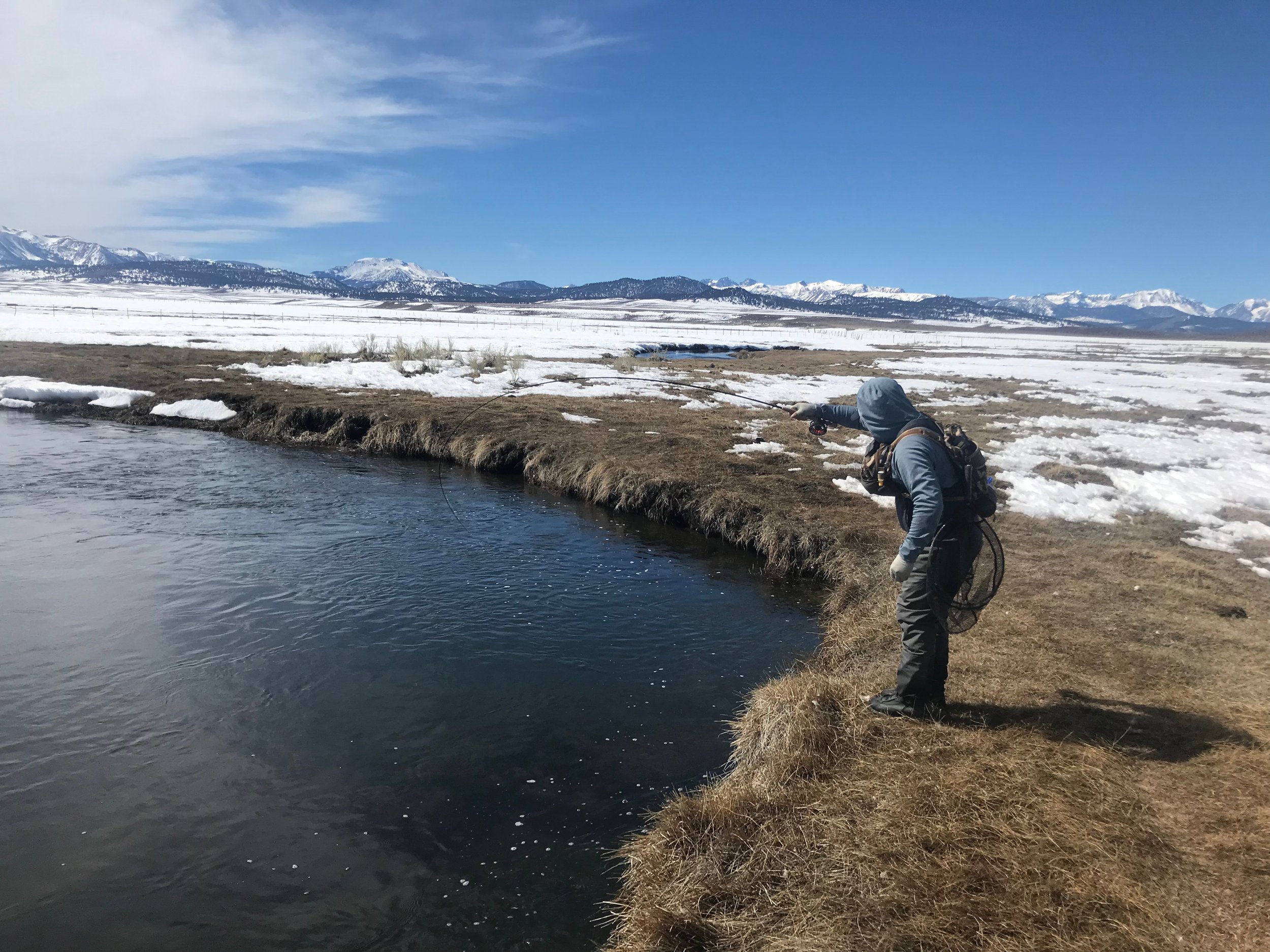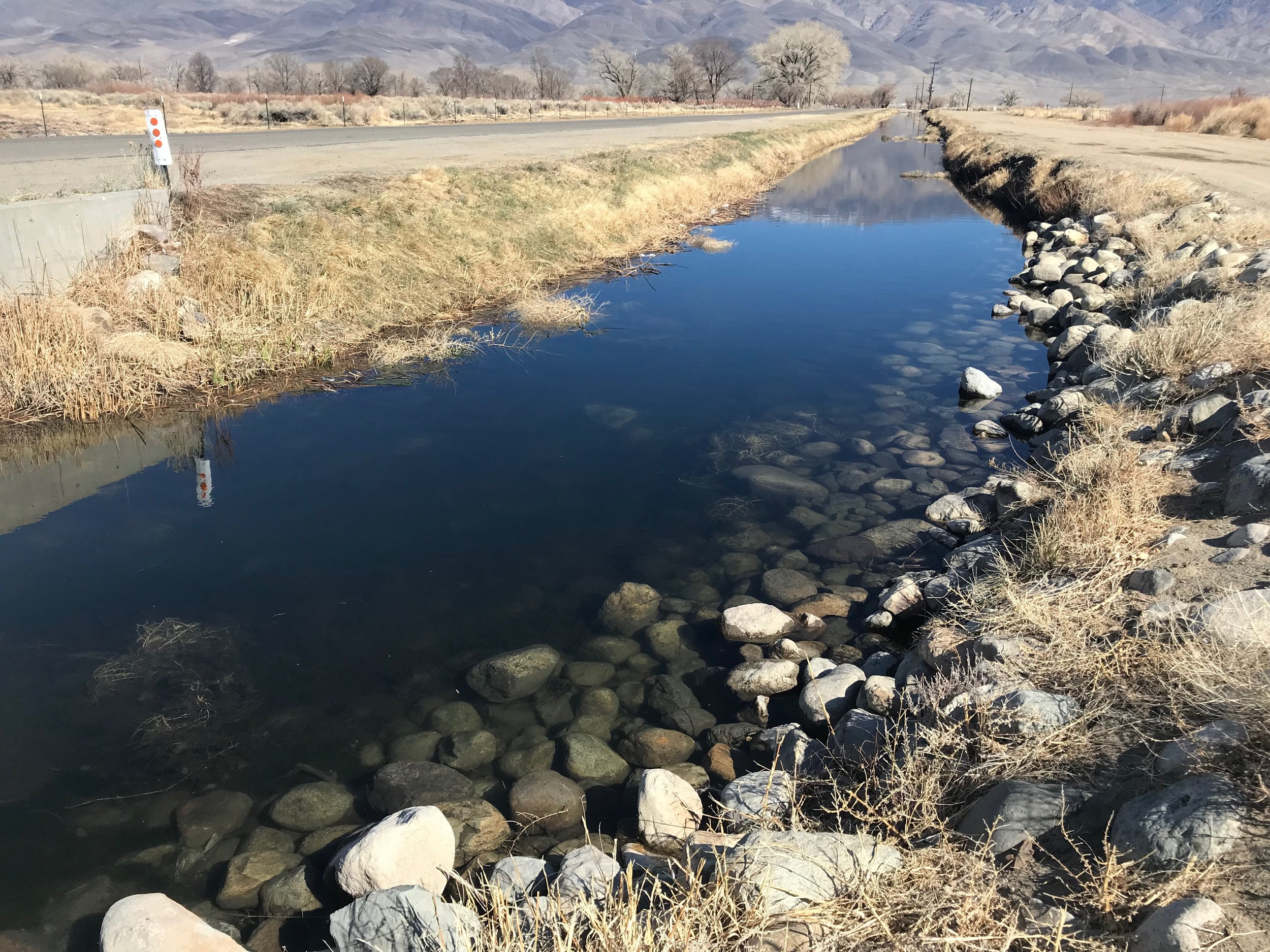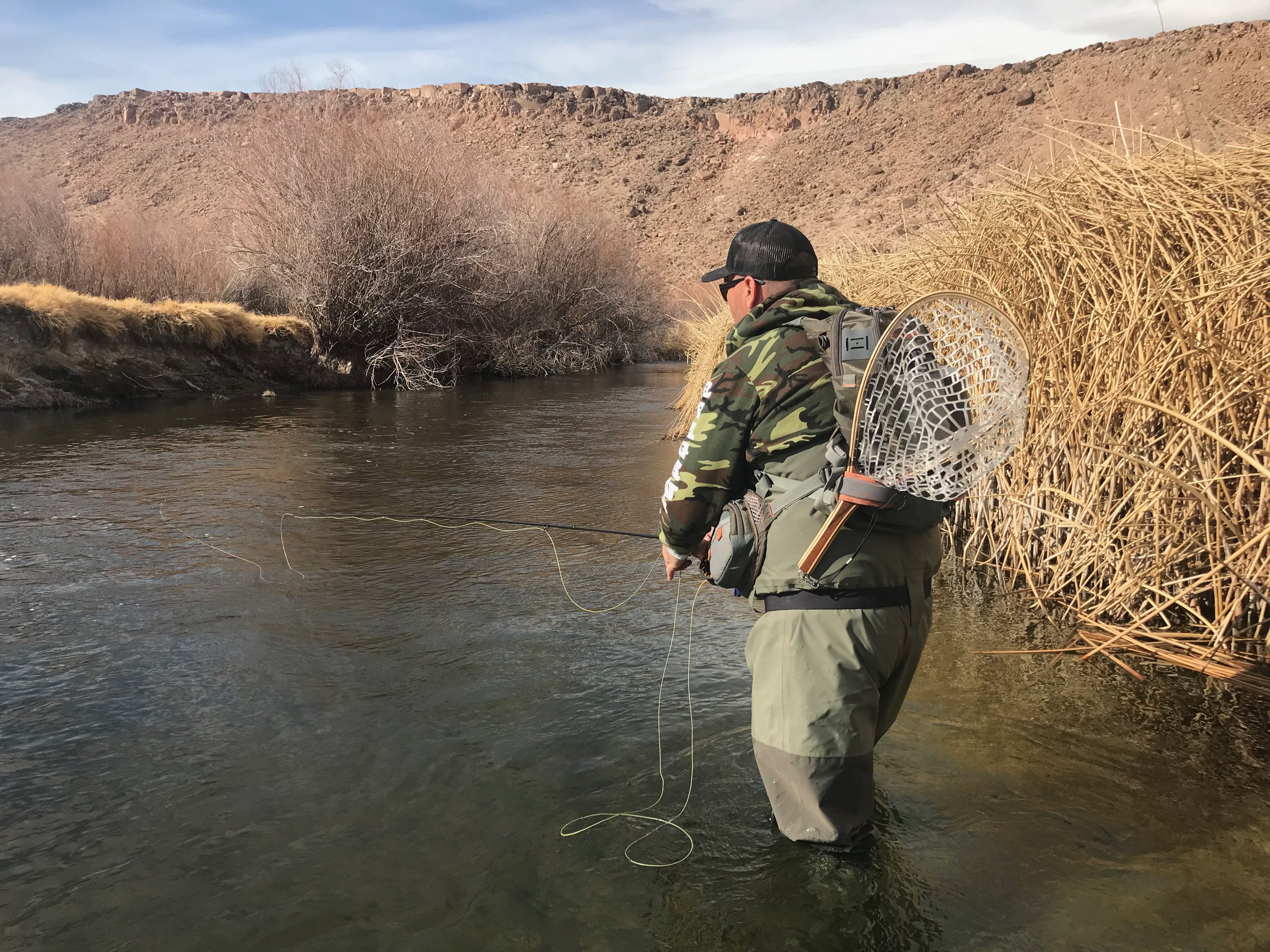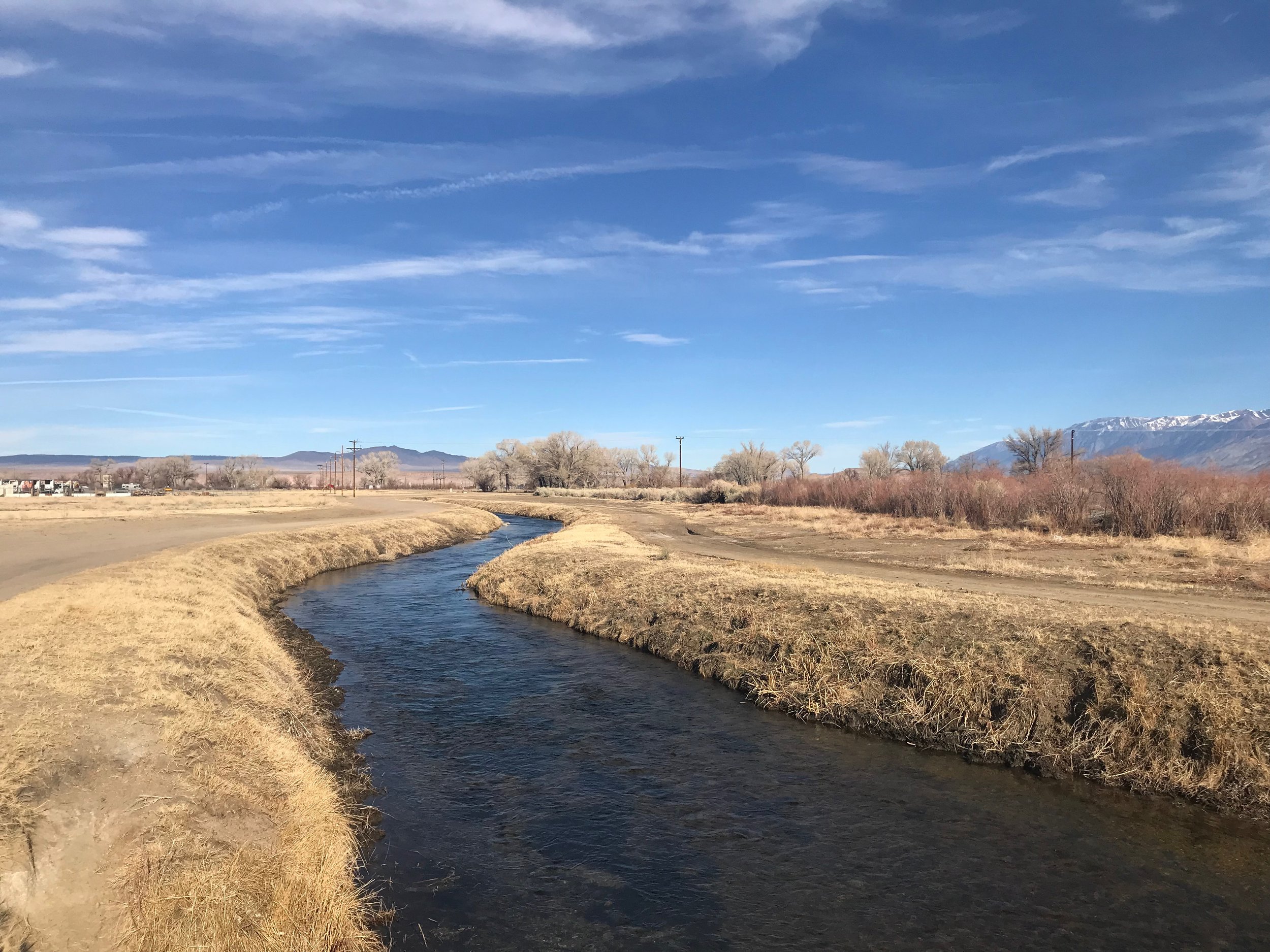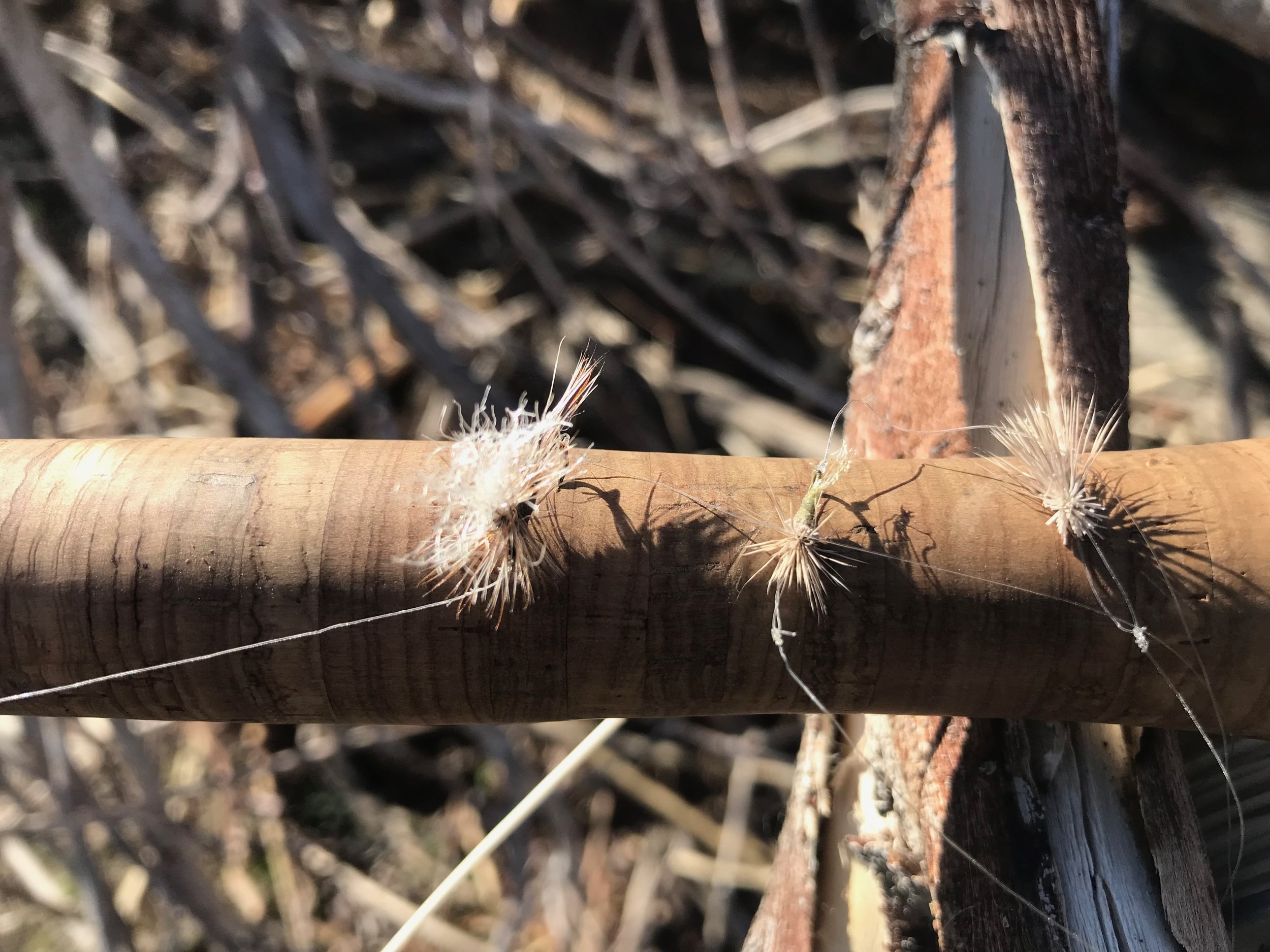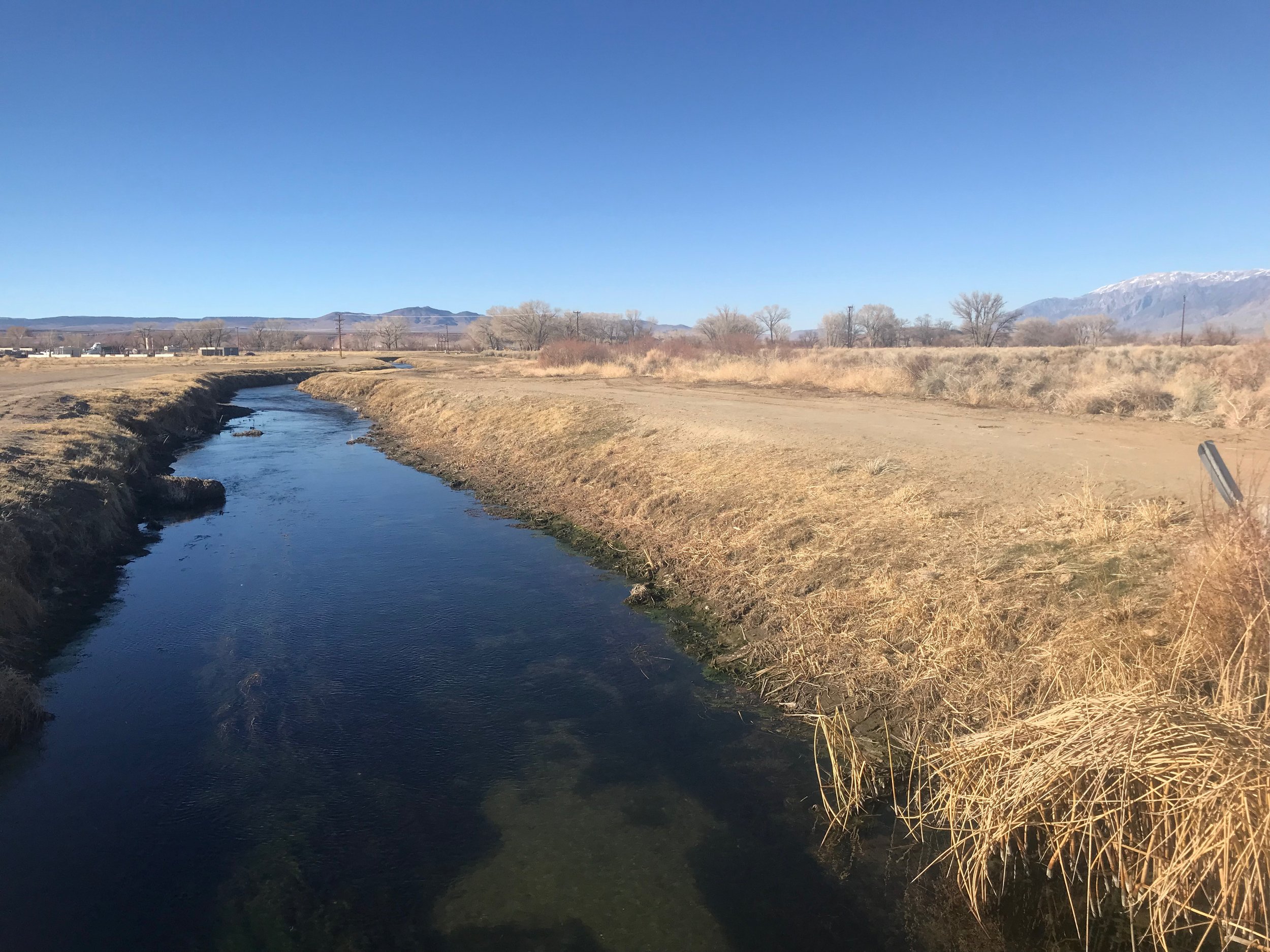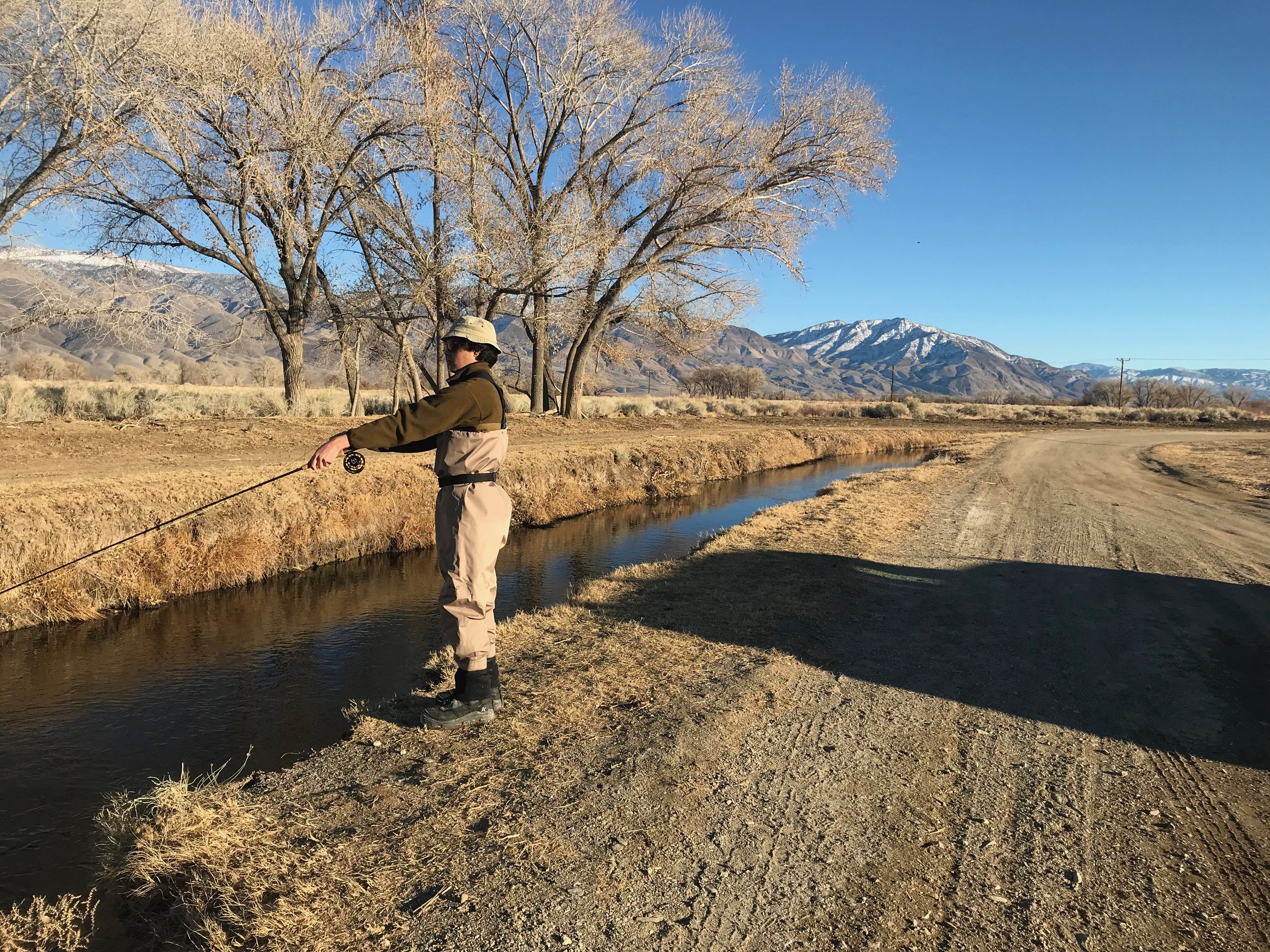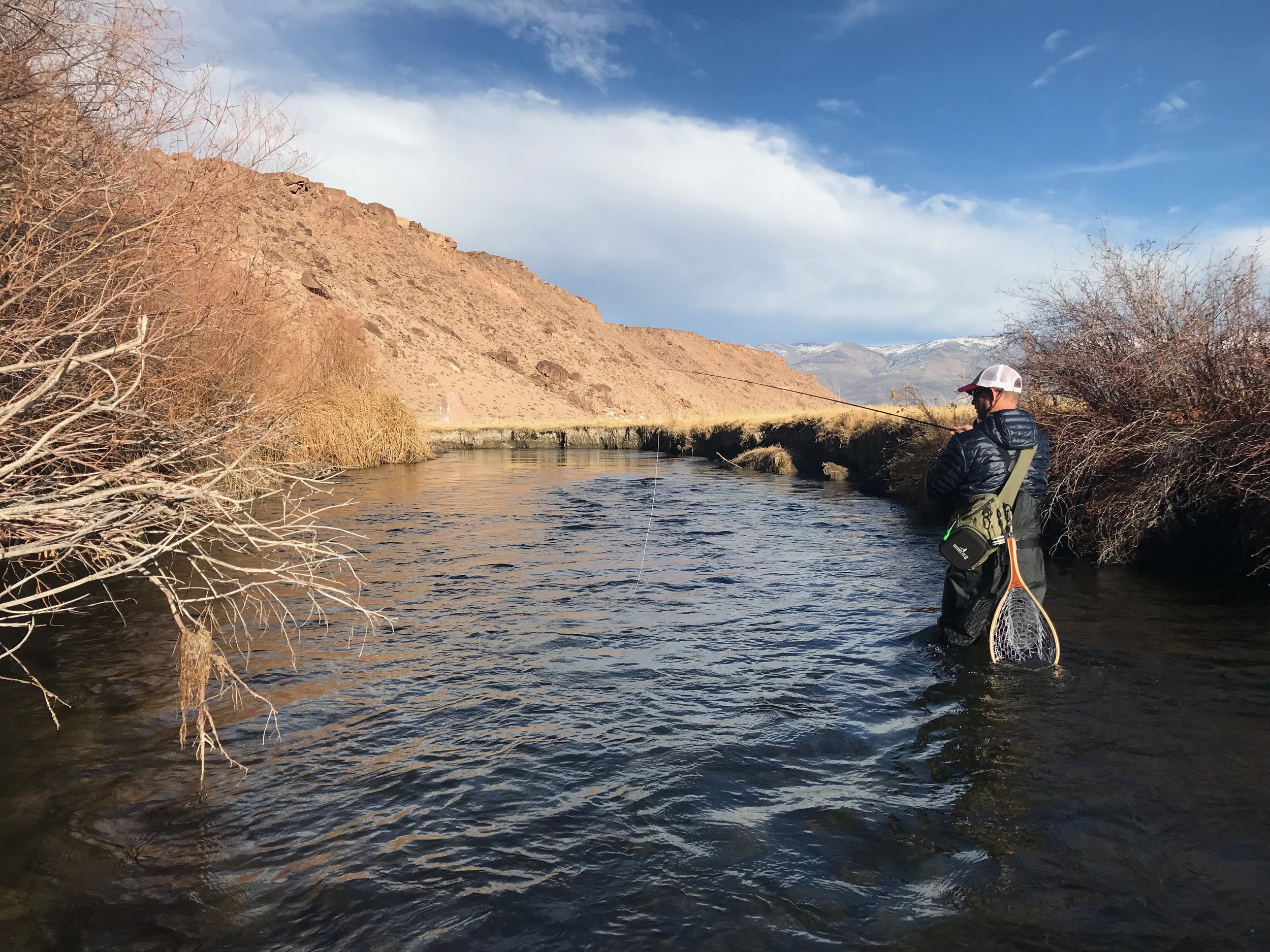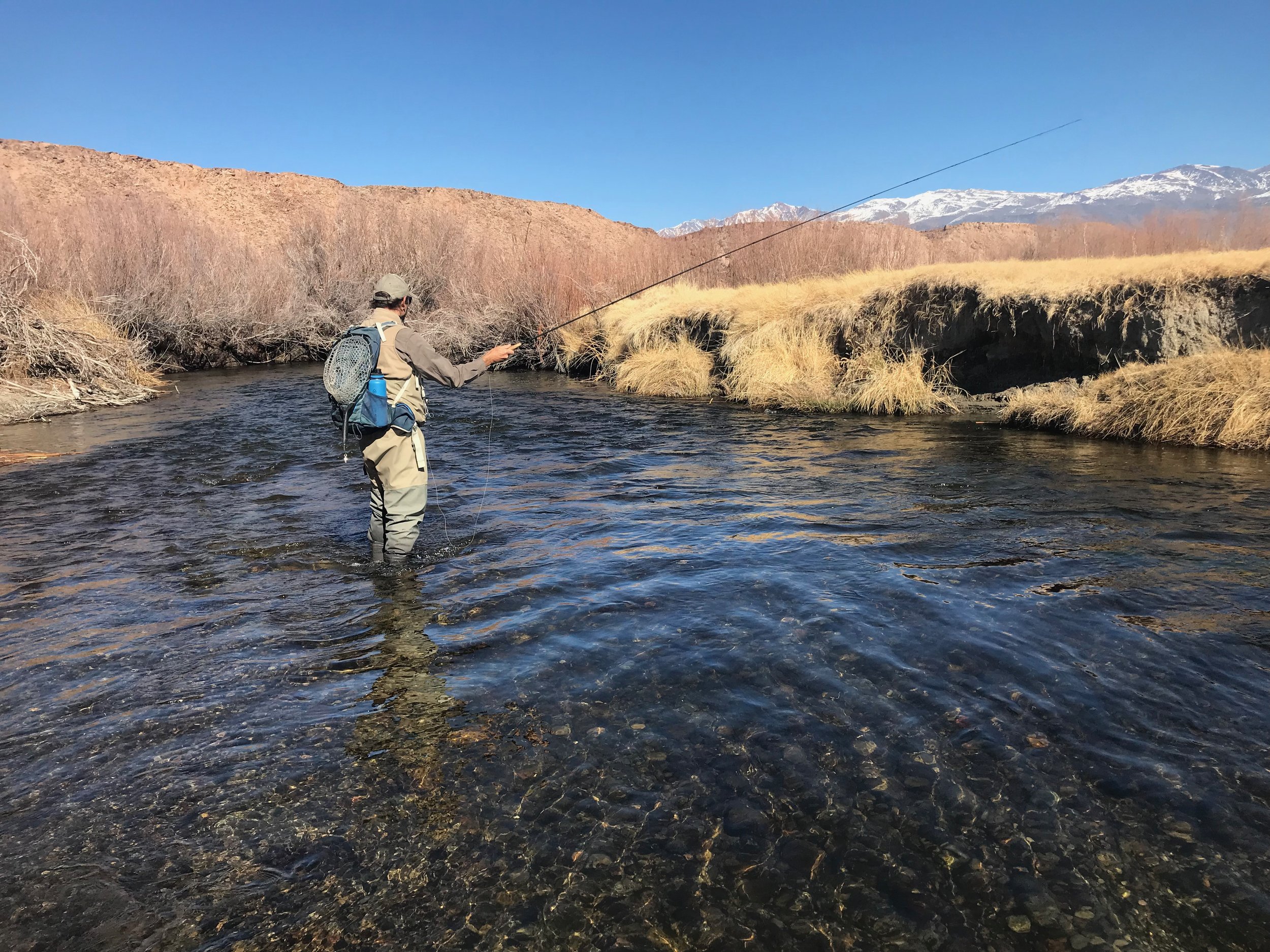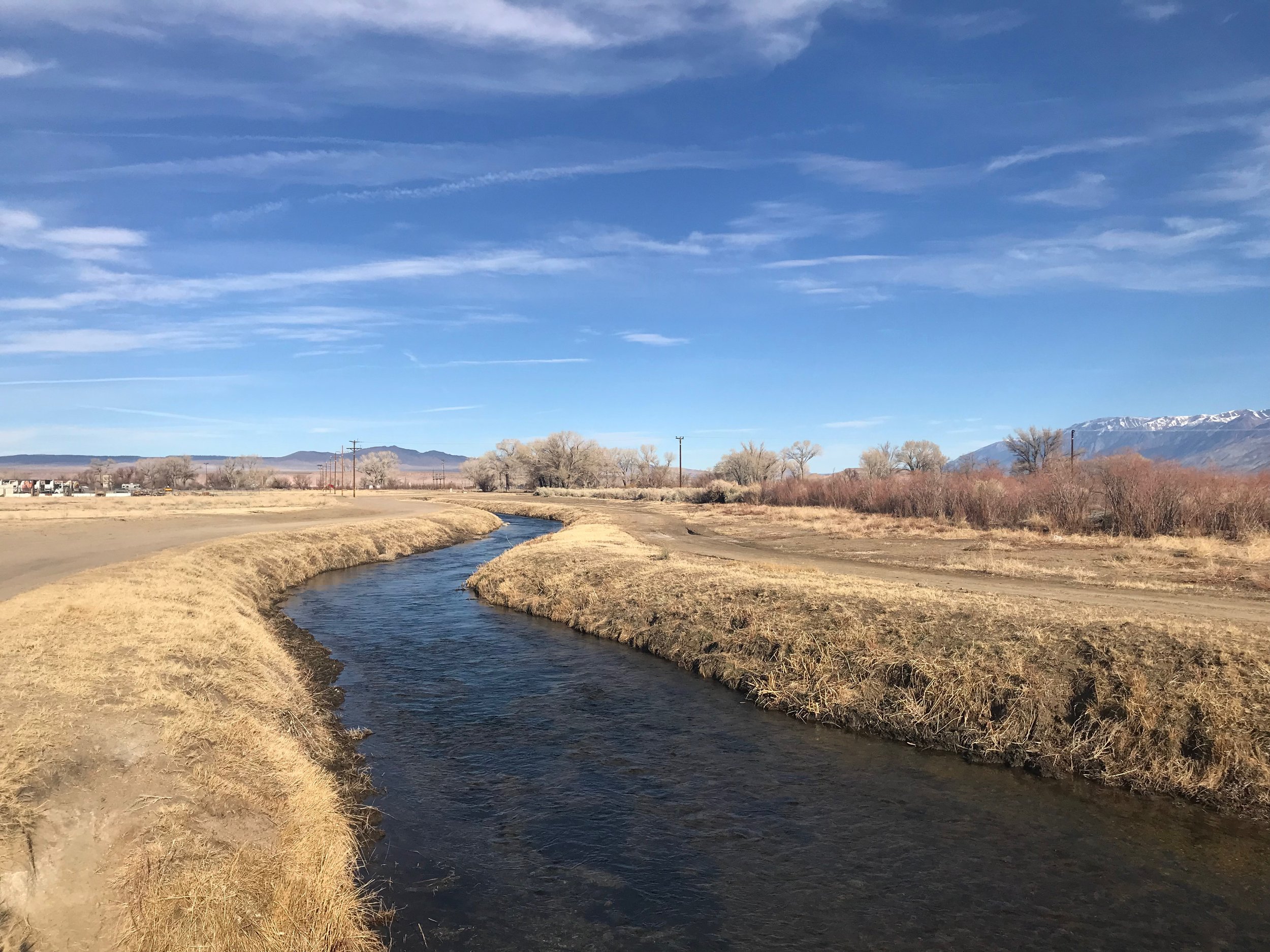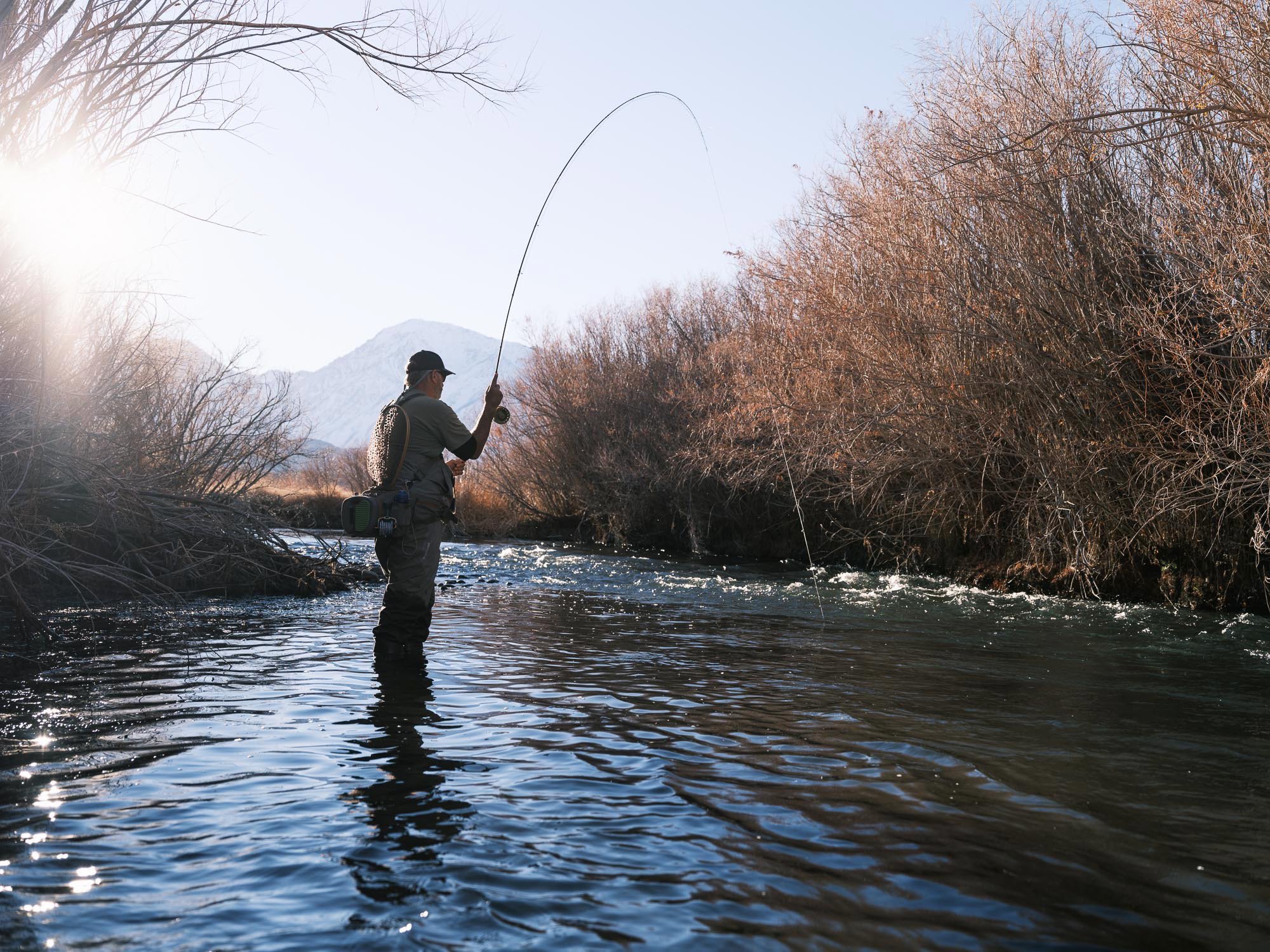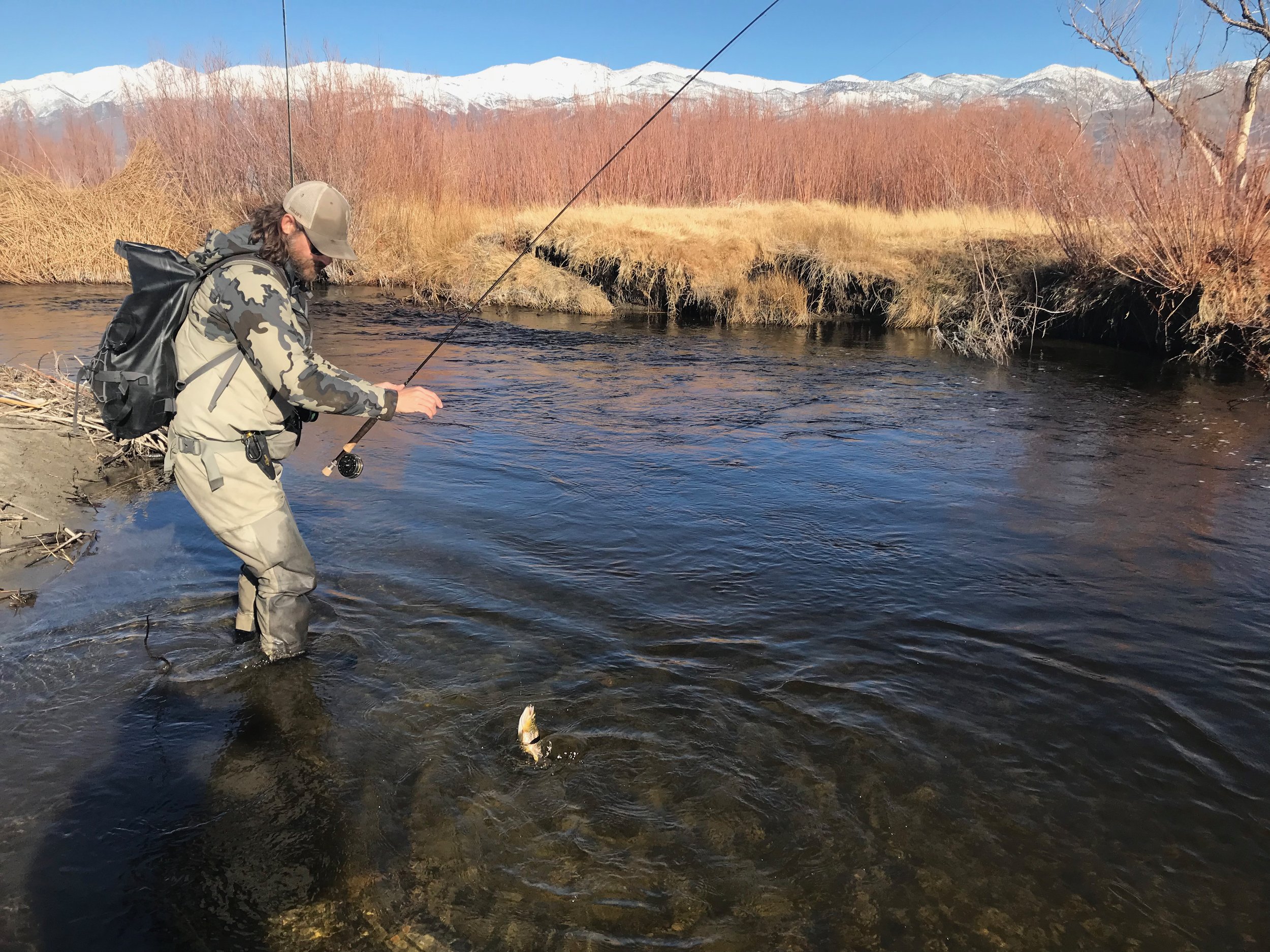Late winter in the Eastern Sierra is warm to hot days sprinkled with the occasional winter storm. This has been a warm week with a storm due to hit the Eastern Sierra as the weekend begins. The increase in daylight with the higher day time temperatures is increasing the insect activity in the streams. Midges, blue wing olive mayflies, and caddis are hatching and the trout are feeding on them. Congratulations to Tom Paulson the winner of the first Trout Rodeo held last weekend on the waters in and around Bishop.
Snow is starting to recede on the road into the Owens River above Benton Crossing Road and it will be another two to four weeks before vehicles can access the dirt roads to the Owens River.
Lower Owens River:
Wild Trout Section:
Blue wing olive may flies have been hatching middle of the day and the trout are feeding on the nymphs and the emergers. Before the hatch size 18 bead head flash back pheasant tail nymphs and size 16 olive quilldigons have been fooling the wild brown trout. First thing in the morning the midges have been swarming on the surface and the trout have been feeding on them sporadically. Fishing midge nymphs like tiger midges and zebra midges and using midge pupae patterns in size 18 to 22 is producing trout. The approaching storm will slow the insect activity down for a day or two.
Working nymphs under the overhanging willows is how you catch the cautious brown trout in the lower Owens River.
Hot Creek:
Interpretive Site:
The ground is starting to show through the bed of snow that has covered the banks of Hot Creek at the interpretive site since late December. The warmer weather has blue wing olive mayflies and midges hatching. Midges have been the predominant insect that the trout are feeding on. Biot midge emergers and parachute midges are fooling the surface feeding trout. On the right days the blue wing olive hatch is strong enough to fish blue wing olive parachutes to the surface feeding trout.
Hot Creek:
Canyon Section:
The snow has not melted enough to allow vehicle access to the parking lots that access the canyon of Hot Creek. The canyon has the least fly fishing pressure and nymphing is producing the bulk of the trout. Nymphing with bead head flash back pheasant tail nymphs, olive quilldigons, tiger midges, zebra midges, Manhattan midges, and secret midges in the runs and pools are fooling the wild rainbow trout and brown trout.
Trophy trout love to run up under the banks to avoid the danger they perceive from being hooked.
Upper Owens River:
Above Benton Crossing Bridge:
The snow is receding and anglers can walk in with their waders and boots to access the upper Owens River above Benton Crossing Bridge. It’s a 30 to 50 minute walk in to the inlets of the Hot Creek forks. In the morning the snow is frozen and easy to walk on. Walking out in the late afternoon is tough as the snow is soft and you are no longer walking on top of the snow. The trophy trout are in the river and feeding on stoner nymphs, green/gold wire Prince nymphs, hot spot pheasant tail nymphs, Frenchie’s, and egg patterns. The trophy trout are concentrated in the deep holes, deep runs, and under the cutbanks.
Bishop Creek Canal is at its lowest level and is very clear making it hard to sneak up on the trout.
Bishop Creek Canal:
Behind the Ford Dealer:
Low clear water is making the trout of Bishop Creek Canal skittish. Casting 30 to 50 feet upstream of the angler allows the flies to drift without spooking the trout. Size 18 blue wing olive parachutes, size 18 olive sparkle duns, and size 20 Griffiths gnats have been fooling the surface feeding wild brown trout. I’ve been fishing these dries three feet behind a size 16 Adams parachute which I’m using as an indicator to identify where my small fly is on the water. Nymphing with zebra midges, tiger midges, olive quilldigons, and bead head flash back pheasant tail nymphs is producing trout before and after the hatch.


